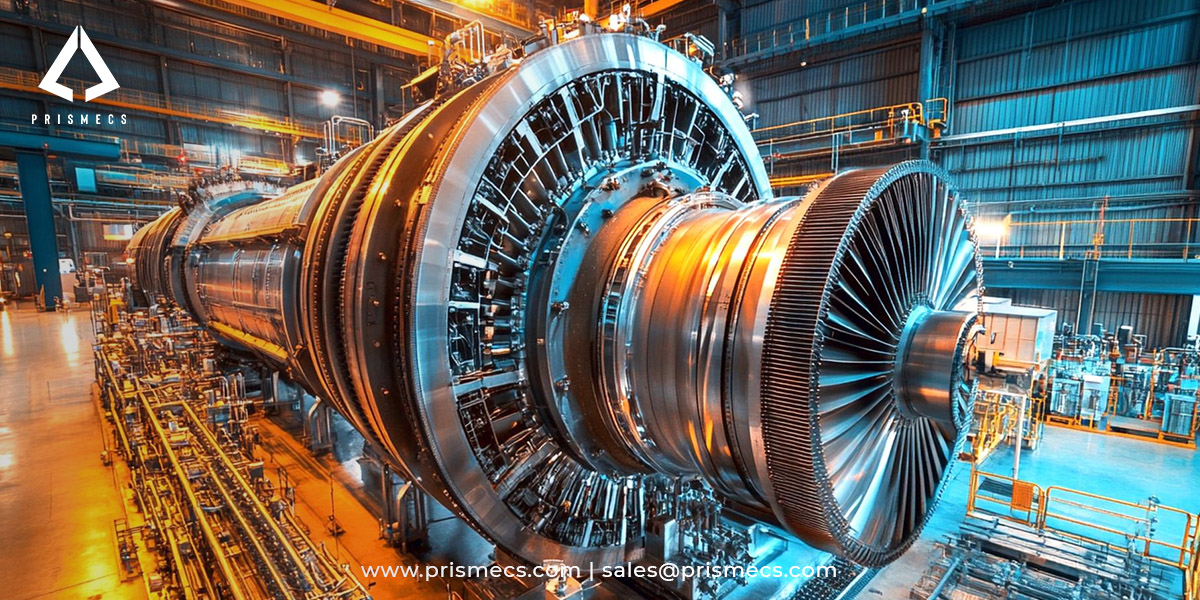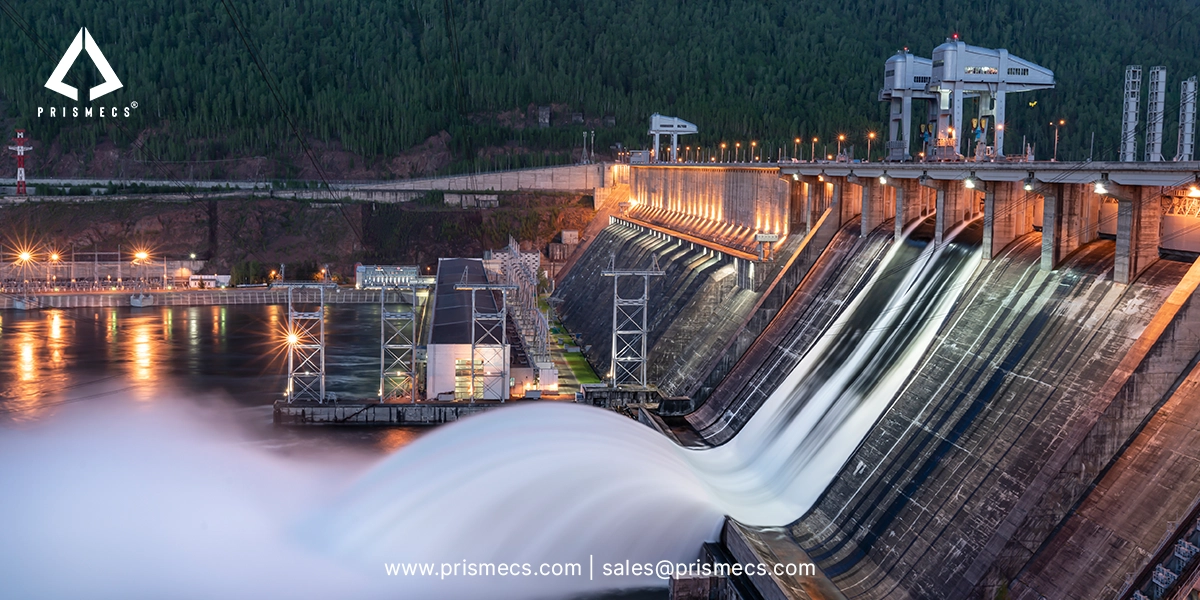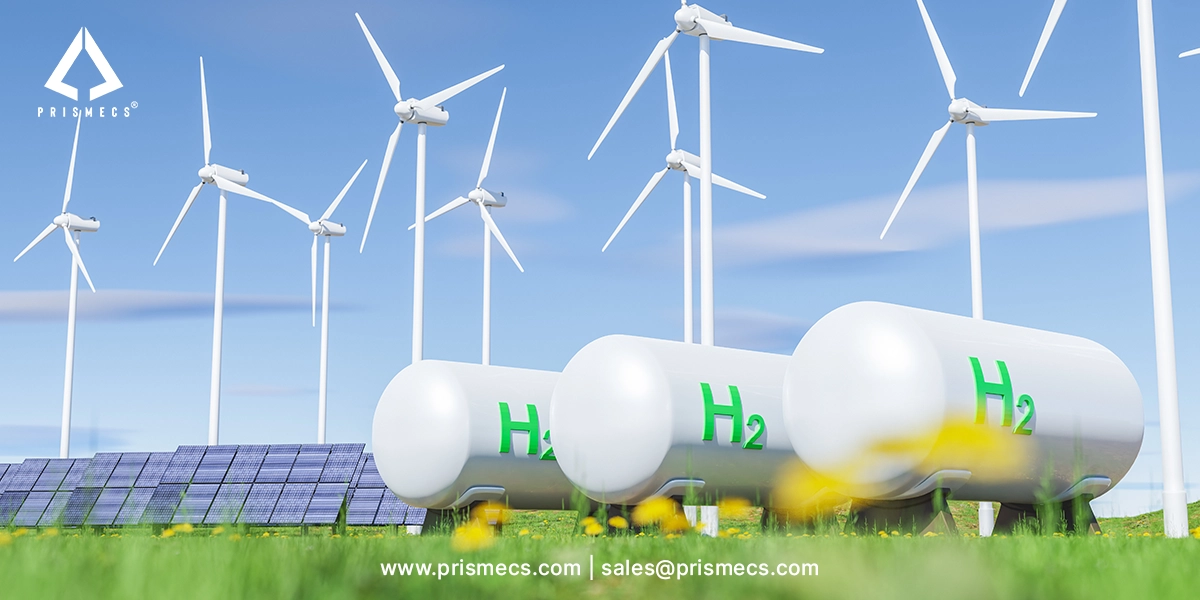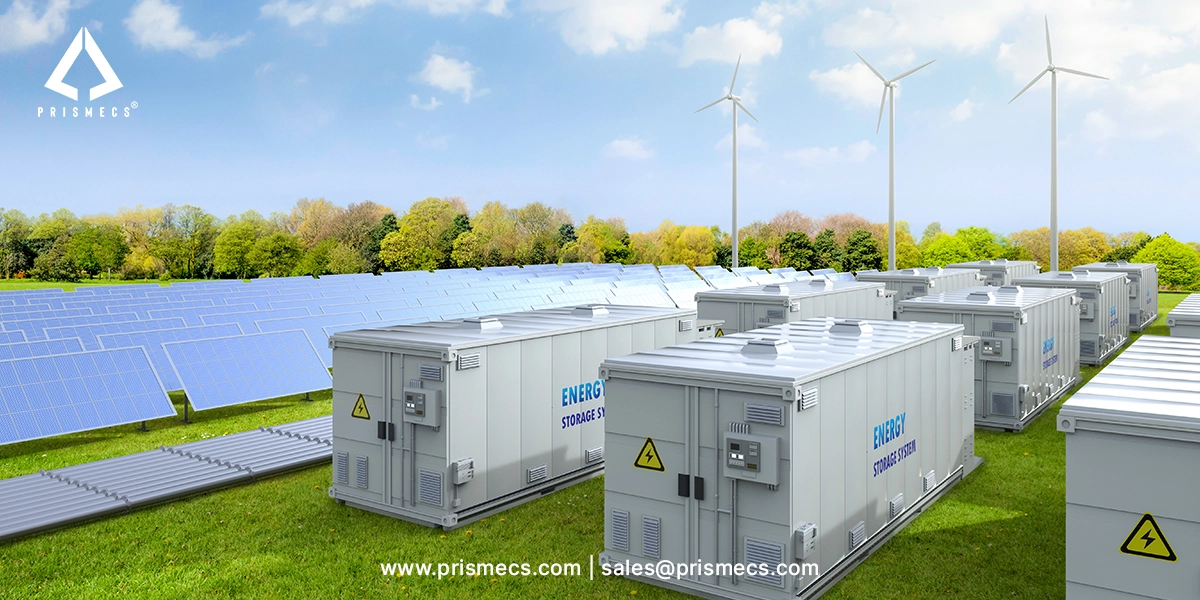
As the world moves to more sustainable energy, gas turbines are increasingly important. These machines are important for producing power nowadays. They use natural gas and other fuels to make mechanical energy and electricity.
This article studies how these turbines are transforming the future of energy production. Also focusing on their advantages, applications, and the technological innovations driving their evolution.
Basics of Turbines
There is an internal explosion engine that converts chemical energy from fuel into mechanical energy, which is then used to generate electricity. The process involves three main components: a compressor, a combustion chamber, and a turbine. The compressor draws in air, pressurizes it, and then mixes it with fuel (typically natural gas or liquid fuel) in the combustion chamber.
The combustion chamber mixes fuel with compressed air and lights it on fire. The fire creates high-pressure, high-temperature gases that expand through the turbine blades and make them spin. This is how thermal energy is converted into mechanical energy.
Benefits
They offer numerous benefits, making them a critical component of modern energy production.
High Efficiency
One of the primary advantages is high efficiency. Modern turbines can achieve thermal efficiencies of up to 60% in combined cycle power plants, using waste heat from them to generate additional electricity through a steam turbine.
This high efficiency makes the turbines an attractive option for power generation, particularly in a world increasingly focused on reducing carbon emissions and optimizing energy use.
Flexibility in Fuel Use
They can use a variety of fuels, including natural gas, liquid fuel (such as diesel or jet fuel), and renewable fuels like biogas. This flexibility allows power plants to switch between different fuel sources based on availability and cost, providing a reliable and adaptable energy solution.
Rapid Start-Up and Shutdown
These turbines can start and shut down quickly, making them ideal for meeting peak electricity demands and providing backup power. This capability is precious in balancing the intermittency of renewable energy sources like wind and solar, ensuring a stable and reliable power supply.
Reduced Emissions
Compared to traditional coal-fired power plants, gas turbines produce significantly lower emissions of pollutants like sulfur dioxide, nitrogen oxides, and particulate matter. When fueled by natural gas, they emit up to 50% less carbon dioxide, contributing to cleaner air and reduced greenhouse gas emissions.
Applications of the Turbines
Power Plants
These turbines are a cornerstone of modern power plants, particularly in the context of combined cycle systems. Combined cycle power plants use both gas and steam turbines to generate electricity, capturing and utilizing waste heat to improve overall efficiency. This method not only maximizes energy output but also minimizes environmental impact.
Industrial Applications
They are widely used in various industrial applications, in addition to power generation. They provide mechanical energy for processes such as oil and gas extraction, chemical manufacturing, and steel production. Their ability to deliver consistent and reliable power makes them essential for industrial operations that require uninterrupted energy supplies.
Aviation
The turbines, in the form of jet engines, are the primary propulsion system for most commercial and military aircraft. Their high power-to-weight ratio and efficiency at high altitudes make them ideal for aviation applications. Innovations in turbine technology continue to improve the performance and fuel efficiency of jet engines, contributing to the aerospace industry's advancement.
Marine
They are also used in marine propulsion systems, particularly in naval vessels and fast ferries. Their compact size, high power output, and quick start-up capabilities make them suitable for applications where space and responsiveness are critical.
Technological Innovations Driving
Advanced Materials and Manufacturing
The development of advanced materials and manufacturing techniques has significantly enhanced the performance and durability of the turbines. High-temperature alloys, ceramic matrix composites, and additive manufacturing (3D printing) are among the innovations that allow turbines to operate at higher temperatures and pressures, improving efficiency and extending service life.
Digitalization and Smart Technologies
Digitalization is revolutionizing the operation and maintenance of these turbines. Advanced sensors, data analytics, and artificial intelligence (AI) enable real-time monitoring and predictive maintenance, reducing downtime and optimizing performance. These smart technologies help operators detect potential issues before they lead to failures, enhancing reliability and reducing maintenance costs.
Hybrid Systems
Hybrid systems that combine the turbines with renewable energy sources, such as solar or wind, are emerging as a promising solution for sustainable power generation.
These systems leverage the rapid start-up capabilities to provide backup power when renewable sources are not producing, ensuring a continuous and stable energy supply.
Carbon Capture and Storage (CCS)
To further reduce the environmental impact, carbon capture and storage (CCS) technologies are being developed and integrated into power plants. CCS involves capturing carbon dioxide emissions produced during combustion and storing them underground or utilizing them in industrial processes. This technology can significantly lower the carbon footprint of power generation.
Market Size
Market Size of Turbines to Reach USD 53.67 Bn By 2033
The Future of These Turbines in Energy Production
As the demand for clean, efficient, and reliable energy grows, these turbines are poised to play a key role in energy production's future. Their versatility, high efficiency, and ability to integrate with renewable energy sources make them an essential component of modern power systems. Here are some key trends and developments to watch:
Decentralized Power Generation
The trend towards decentralized power generation is gaining momentum, with smaller, localized power plants becoming more common. They are well-suited for these applications due to their flexibility, scalability, and quick start-up capabilities.
Decentralized power generation enhances energy security, reduces transmission losses, and allows for greater integration of renewable energy sources.
Hydrogen as a Fuel
Hydrogen is emerging as a potential clean fuel for these turbines. When burned, hydrogen produces only water vapor, making it an environmentally friendly alternative to traditional fossil fuels. Researchers are focusing on adapting the turbines of gas to operate efficiently on hydrogen, which could revolutionize the power generation industry and significantly reduce carbon emissions.
Grid Stability and Reliability
As the share of renewable energy in the power grid increases, maintaining grid stability and reliability becomes more challenging. Also, with their ability to quickly ramp up and down, is crucial for balancing supply and demand and providing ancillary services such as frequency regulation and voltage support. Their role in ensuring a stable and resilient grid will be increasingly important in the future.
Energy Storage Integration
Integrating energy storage systems, such as batteries, with these turbines of gas can enhance the flexibility and efficiency of power generation. Energy storage stores excess electricity generated during periods of low demand and uses it when demand is high. This combination can smooth out fluctuations in power supply, improve grid stability, and reduce reliance on fossil fuels.
Enhanced Efficiency and Performance
Continuous advancements in turbine technology will drive further improvements in efficiency and performance. Innovations such as supercritical CO2 cycles, which use carbon dioxide as a working fluid in a closed-loop system, can greatly increase the efficiency of the turbines. These technological breakthroughs will make power generation an even more attractive option.
Conclusive Remarks
Gas turbines are at the forefront of the transformation in energy production. Their high efficiency, fuel flexibility, and rapid start-up abilities make them essential in modern power plants and various industrial applications. Technological innovations, from advanced materials to digitalization, are enhancing their performance and reliability while emerging trends. For example, hydrogen fuel and hybrid systems are paving the way for a more sustainable energy future.
Partner with Prismecs for Advanced Gas Turbine Solutions
Our advanced technology, coupled with comprehensive support and tailored solutions, ensures that your energy operations are optimized for performance. Trust Prismecs to provide the unparalleled expertise required to meet your energy production goals.
Together, we can navigate the challenges of today’s energy landscape and contribute to a sustainable future. Contact us today to start transforming your energy future with Prismecs. To avail of our gas turbine services, call us at +1 (888) 774-7632 or email us at sales@prismecs.com
Frequently Asked Questions (FAQs)
1. What is a gas turbine, and how does it work?
A gas turbine is a type of engine that converts natural gas or other liquid fuels into mechanical energy. This energy drives a generator to produce electricity.
2. Why are gas turbines considered important for the future of energy production?
Gas turbines are essential for the future of energy production. They provide a reliable, flexible, and efficient method for generating electricity.
3. What role do these turbines play in supporting renewable energy sources?
Gas turbines have improved with better efficiency, stronger materials, and the capability to use various fuels.
4. What advancements are being made in gas turbine technology?
Advancements in gas turbine technology include higher efficiency, better materials for extreme temperatures, and the ability to use a wider variety of fuels.
5. What challenges do gas turbines face in the energy transition?
Challenges include developing turbines that efficiently use low-carbon fuels, managing the costs of advanced technologies, and maintaining economic viability as renewable energy grows.
Tags: Gas Turbines Power Generation Turbine Technology Energy Production Jet Engines Turbine Efficiency Industrial Turbines Combustion Turbines Renewable Energy
recent posts

Renewables
5 minutes read
How Renewable Energy Systems Work Efficiently
Discover how renewable energy systems work efficiently to provide affordable, zero carbon energy, overcome storage challenges, and power for a sustain...

I and C Services
7 minutes read
Expert Commissioning Services for Safe, Efficient Operations
Discover expert commissioning services for safe and efficient operations. Improve system performance, save energy, and enhance indoor air quality.

Green Hydrogen
6 minutes read
Green Hydrogen Plant Technology Guide
Discover how a green hydrogen plant works, its key technologies, and its role in clean energy. Explore solutions for scalable, carbon-free hydrogen pr...

EPC Services
7 minutes read
EPC Power: From Design to Delivery of Reliable Energy System
Discover how EPC power solutions streamline design to delivery, ensuring reliable, efficient, and future-ready energy systems in one integrated proces...